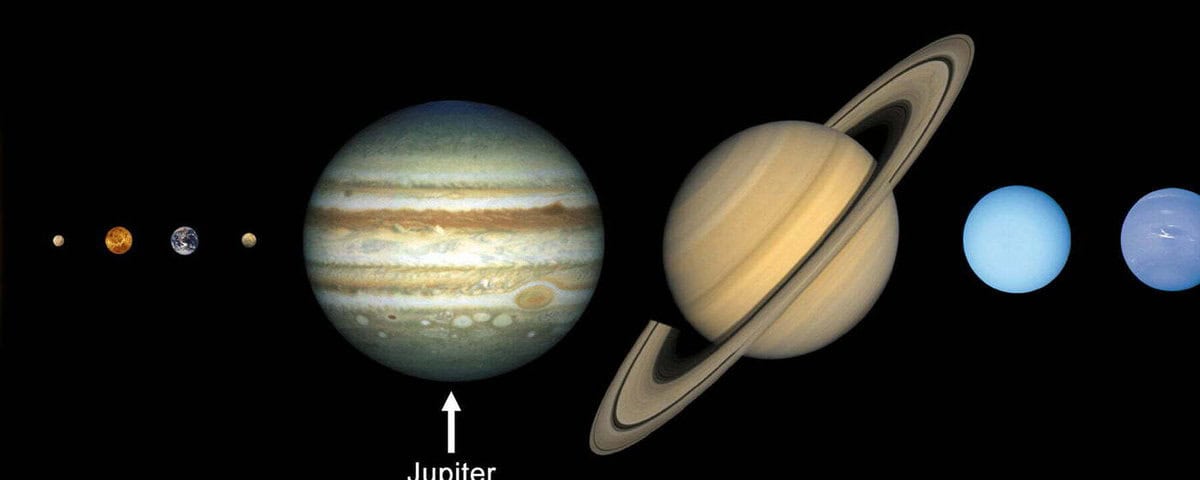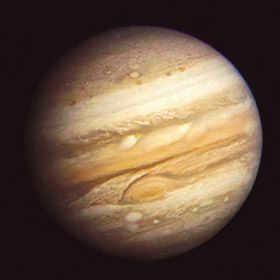

Jupiter is positioned as the fifth planet in the solar system. It is situated approximately 775 million kilometers away from the Sun, equivalent to 5.2 astronomical units. Astronomers classify the planets of the solar system into two categories: terrestrial planets and gas giants. Jupiter is the largest planet among the gas giants.
Jupiter is 318 times the size of Earth, and if it were approximately 60 times larger, there would be a significant possibility for it to undergo spontaneous thermonuclear reactions and become a star. The composition of the planet’s atmosphere consists of approximately 85% hydrogen, while the remaining 15% primarily consists of helium, along with traces of ammonia, sulfur, phosphorus compounds, and methane.
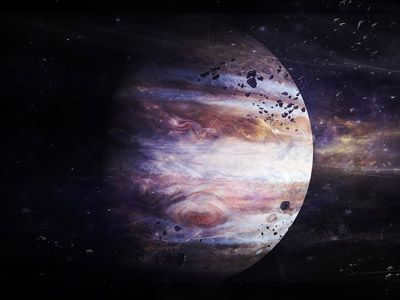

By utilizing spectral analysis, scientists have determined that there is an absence of oxygen on the planet, indicating a lack of water – the essential element for life. However, an alternative theory suggests that there may still be ice present within Jupiter’s atmosphere. The scientific community remains divided on this topic, with numerous hypotheses surrounding the planet’s internal composition. Recent spacecraft explorations have provided valuable insights, resulting in a model that offers a high level of certainty regarding Jupiter’s structure.
Structure within
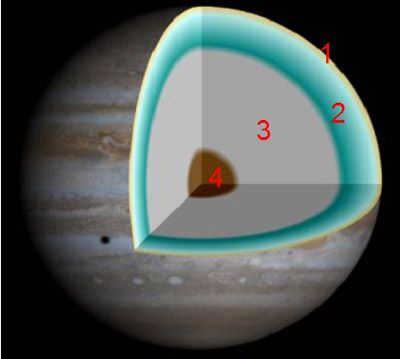
Jupiter is a planet that has a spheroid shape and is highly compressed at the poles. It possesses a powerful magnetic field that extends beyond its orbit for millions of kilometers. Its atmosphere consists of various layers with distinct physical properties. Scientists theorize that Jupiter may contain a solid core, estimated to be 1-1.5 times the size of Earth’s diameter but much denser. The existence of this core has not been definitively proven or disproven.
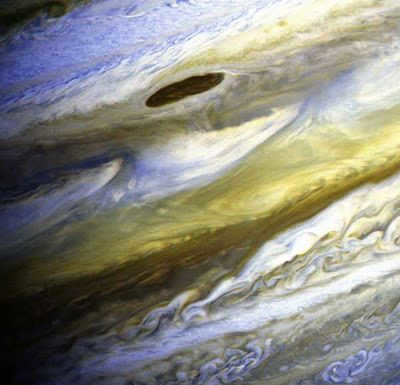
Jupiter’s upper atmosphere is composed of a combination of hydrogen and helium gases and spans a range of 8 to 20 thousand kilometers in thickness. Moving deeper into the planet, the next layer measures approximately 50 to 60 thousand kilometers in thickness and undergoes a transition from a gas to a liquid state due to the increasing pressure. Within this layer, temperatures can soar up to a scorching 20,000 degrees Celsius. Descending even further (to a depth of 60-65 thousand kilometers), hydrogen undergoes a transformation into a metallic state. This transformation is accompanied by a staggering increase in temperature to a blazing 200,000 degrees Celsius. Simultaneously, the pressure reaches an astonishing 5,000,000 atmospheres. Metallic hydrogen is a theoretical substance distinguished by the presence of free electrons and the ability to conduct electric current, much like traditional metals.
Jupiter’s Satellites – An Exploration into the Moons Orbiting the Giant Planet
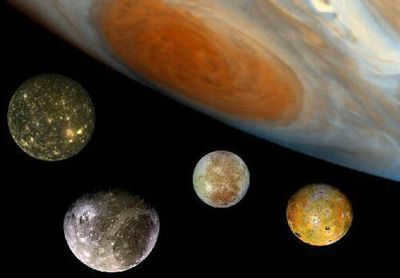
Jupiter, the largest planet in our solar system, is home to an impressive number of 79 natural satellites. As of 2018, this is the number of known satellites revolving around Jupiter. Among these satellites, there are four that have been extensively studied and have their own distinct characteristics.
One such satellite is Io, which boasts a breathtaking landscape filled with rocky formations and active volcanoes. The Galileo spacecraft, which extensively explored Jupiter’s satellites, even captured a volcanic eruption on Io.
Ganymede, the largest satellite in our solar system, may not have the same diameter as Titan (one of Saturn’s satellites) or Triton (one of Neptune’s satellites), but it is covered by a thick icy crust that spans 100 kilometers. Scientists speculate that beneath this icy layer, there could potentially be vast reserves of water.
Additionally, there is a theory that a subterranean ocean exists on Jupiter’s satellite, Europa, which is predominantly composed of a substantial layer of ice. The imagery clearly exhibits fractures that resemble those caused by icebergs.
Moreover, the title of the solar system’s oldest resident can rightfully be bestowed upon Jupiter’s moon, Callisto, as its surface boasts a greater number of craters than any other celestial body in our solar system. Remarkably, this surface has remained relatively unchanged for billions of years.
Fascinating tidbits about our celestial neighbor
Despite its massive size, Jupiter experiences a relatively short day, lasting only about 10 hours. Unlike Earth, the planet does not have distinct seasons due to its equator being aligned with the ecliptic plane. However, powerful winds blow parallel to the equator at speeds reaching up to 500 km/hour, forming the well-known Northern and Southern Equatorial Belts. These distinct brownish bands, adorned with swirling patterns, are visible even to amateur astronomers. Another captivating feature of Jupiter is the Great Red Spot, a perplexing mystery that scientists believe to be a colossal hurricane, spinning with winds exceeding 300 kilometers per hour for several centuries.
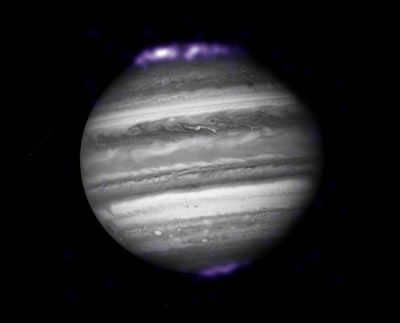
Jupiter possesses another enigma as it serves as a radiant supplier of X-rays. It rhythmically oscillates with a periodicity of approximately 40 minutes. The planet’s atmosphere is consistently enveloped in a potent and incessant electrical activity. Lightning discharges on Jupiter can span a colossal distance of over 1000 kilometers.
Exploration of the celestial body
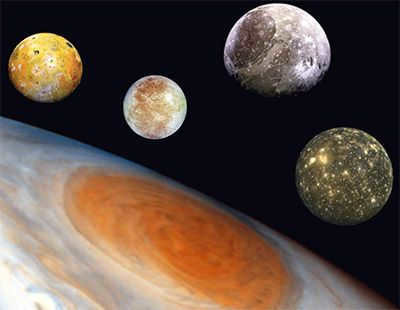
In 1610, Galileo Galilei conducted the initial examination of Jupiter using his personal telescope, during which he also identified the planet’s four largest satellites. In 1665, Cassini made the noteworthy discovery of the Great Red Spot and accurately calculated the planet’s day length. Due to the extremely dense atmosphere, visual observations were challenging, and astronomers primarily focused on discovering additional satellites.
A systematic exploration of Jupiter commenced in 1972 with the launch of the Pioneer and Voyager spacecraft series. These missions provided Earth with an abundance of photographs, atmospheric composition data, and findings on Jupiter’s magnetic and radiation fields.
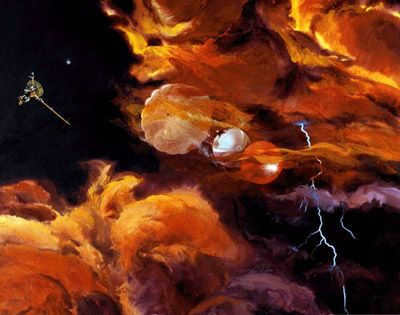
In 1989, the Galileo spacecraft was sent on a mission to study Jupiter. As part of this mission, a probe was deployed into Jupiter’s atmosphere. The probe descended using a parachute and successfully operated for over an hour, transmitting valuable data back to Earth. Unfortunately, the high pressure in Jupiter’s atmosphere eventually caused the probe to be destroyed.
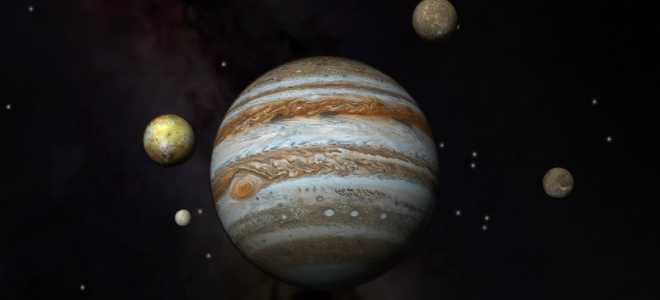

Were you aware that Jupiter holds the title for being the biggest planet? Indeed, this massive gas giant outshines all other known celestial bodies in terms of its size and mass. However, it’s not just its impressive dimensions that make it fascinating.
Simply observe the breathtaking beauty of Jupiter.
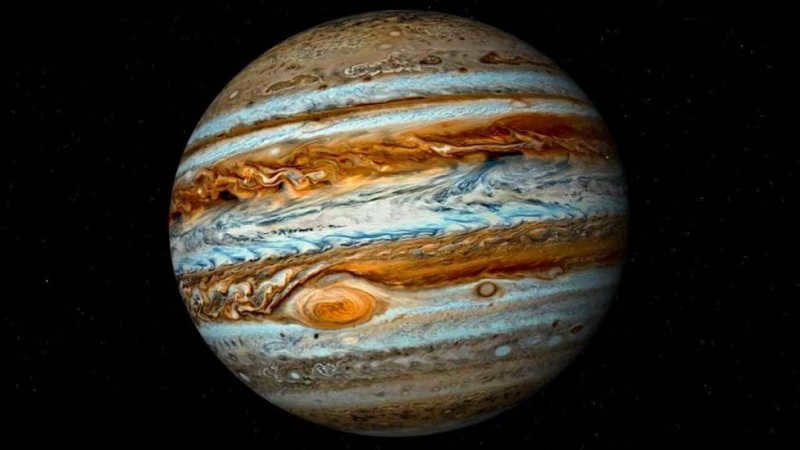
By the way, it possesses numerous distinctive characteristics, which, in reality, we will acquaint ourselves with today.
The Composition of Jupiter
First and foremost, let us examine its composition. Notably, it consists of gaseous and liquid substances. Additionally, our colossal entity is divided into its atmospheric and internal regions.
Based on the available information, a concise depiction of Jupiter’s structure can be outlined:
- A compact rocky nucleus measuring 20,000 kilometers in diameter and weighing 10 times that of Earth.
- A layer of metallic hydrogen extending between 30,000 and 50,000 kilometers. This accounts for the planet’s robust magnetic field.
- The hydrogen-helium layer, approximately 21,000 kilometers in thickness, undergoes a transition from a gaseous state to a liquid state. It resides beneath the clouds.
- Regrettably, the precise chemical composition remains undetermined. However, extensive research has been conducted on the outer atmospheric layers.
Primary characteristics
Remarkably, the most colossal planet boasts a radius of 71.4 thousand kilometers, exceeding the Earth’s measurement by more than 11 times.
It possesses a mass that is nearly 2.5 times greater than the combined mass of the other planets. Naturally, its mass is dwarfed by that of the Sun, which is approximately 1000 times greater.
Interestingly, its density is nearly equivalent to that of the central star, and it is more than 4 times less dense than Earth.
Significantly, many exoplanets share similar size and mass characteristics with Jupiter, making it a standard unit of measurement for their magnitudes.

Due to its gaseous surface, no spacecraft has been able to successfully land on Jupiter, making its study extremely challenging and nearly impossible.
Nevertheless, scientists have managed to calculate Jupiter’s gravity, which is 2.4 times greater than Earth’s. They have also determined its acceleration of free fall, which amounts to 24.79 m/s².
Composition of the Atmosphere and Temperature on Jupiter
According to scientific estimates, the atmosphere of Jupiter is composed of a variety of simple compounds such as water, ammonia, hydrogen sulfide, methane, and phosphine. This suggests that there are significant amounts of carbon, nitrogen, and sulfur present, with the possibility of oxygen as well. However, the majority of the atmosphere is made up of hydrogen and helium.
In addition, Jupiter is known to have higher concentrations of noble gases such as krypton, xenon, and argon compared to the Sun.
It is believed that the chemical composition of the gas envelope on Jupiter may vary in different regions, which could explain the variations in color. For instance, there are areas with higher concentrations of water vapor known as “wet” regions, as well as areas with lower concentrations known as “dry” regions.
It is important to observe that the composition of Jupiter’s atmosphere bears resemblance to that of Earth. Much like our planet, it consists of distinct layers: exosphere, thermosphere, stratosphere, tropopause, and troposphere. However, unlike Earth, Jupiter lacks a mesosphere and, consequently, a mesopause.
Furthermore, the heating within these layers is uneven. For instance, the upper regions experience intense heating. Nevertheless, as one moves towards the tropopause, the temperature decreases while the pressure increases. Subsequently, both temperature and pressure rise again within the lower layers.
Additionally, the atmospheric belts and zones are divided into equatorial, tropical, temperate, and polar regions. These divisions are characterized by turbulent activity, resulting in strong air currents. In fact, these winds can reach speeds exceeding 600 km/h.
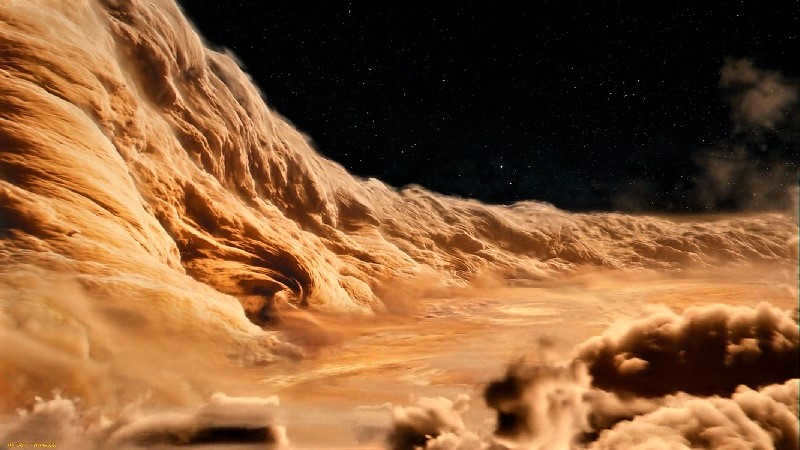
Atmospheric Bands on Jupiter
Jupiter stands out among other planets due to its distinct characteristics, particularly its atmospheric bands. These bands are believed to be a result of convection, involving heating and cooling, as well as the movement of different layers.
Recently, scientists have proposed a new theory suggesting that the formation of these bands is influenced by the gravitational pull of Jupiter’s satellites. According to this hypothesis, the gravitational forces from the satellites create columns of material, which then rotate and give rise to the unique striped patterns observed on the planet.
The Great Red Spot is a vortex formation situated in the southern region of the tropical zone. Its current dimensions measure 15*30 thousand kilometers. This distinctive elongated hurricane exhibits clockwise rotational movement in its central region, while the outer edges display counter-clockwise motion. A complete revolution takes place in a span of six Earth days. However, the exact cause of the spot’s red hue remains a mystery to scientists. It is speculated that phosphorus content may play a role, although this theory has yet to be confirmed.
Furthermore, there exists The lesser red spot, which consists of two small white clouds.
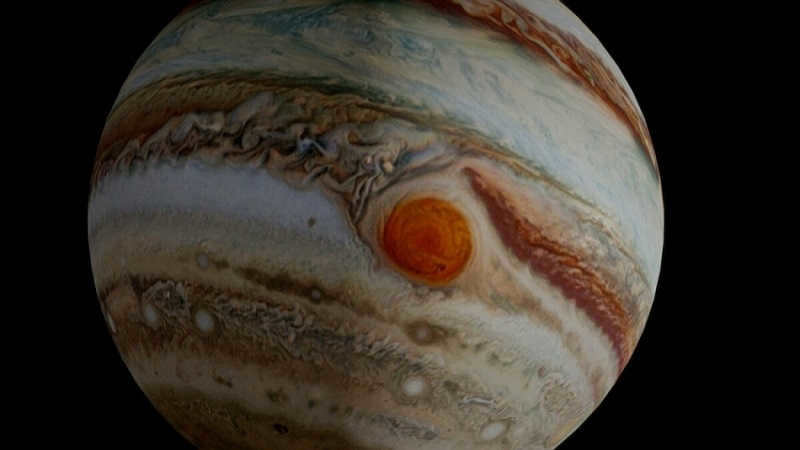
Furthermore, during the examination of the vortex formations, scientists have observed elevated pressure at their core. Based on the data collected from space probes, they have detected massive lightning flashes, which are significantly more powerful than those on Earth.
Interestingly, radio measurements conducted on Jupiter have revealed that the temperature does not decrease, but actually increases in the areas where the shadows of its satellites fall upon it.
Magnetic field and radiation belts
It turns out that the magnetic field has a highly flattened shape resembling a disk.
Meanwhile, there exists a magnetosphere surrounding the planet. Additionally, there is a torus in its orbit that governs the behavior of the magnetosphere.
A torus is a surface formed when a circle rotates on an axis in the plane of that circle but does not intersect it.
In fact, Jupiter possesses the most intense regions of magnetospheric activity where high-energy protons and electrons are accumulated and trapped. In other words, the radiation levels on Jupiter are extremely high and well above the lethal dose for humans.
By the way, this massive gas planet is the fifth most distant from the Sun. Scientists estimate its average distance to be about 779.57 million kilometers, and it takes approximately 11.86 years for Jupiter to complete one revolution around the Sun. This means that a year on Jupiter lasts around 4332.5 days.
Additionally, the distance between Jupiter and Earth can range from 588 to 967 million kilometers.
Furthermore, Jupiter has a faster rotation speed than any other planet, resulting in its equatorial radius being 6.5% larger than its polar radius.
What are Jupiter’s Satellites?
Recent data reveals that a grand total of 79 satellite entities have been discovered orbiting around the massive planet. Interestingly, Jupiter holds the second position among our solar system’s planets, with only Saturn surpassing it in terms of satellite count.
These satellites can be classified into two categories: internal and external, as well as Galilean and non-Galilean (discovered by Galileo Galilei and others). In this article, we will primarily focus on the four largest objects, which were initially observed by Galileo Galilei back in 1610 and have since been subject to relatively extensive research.
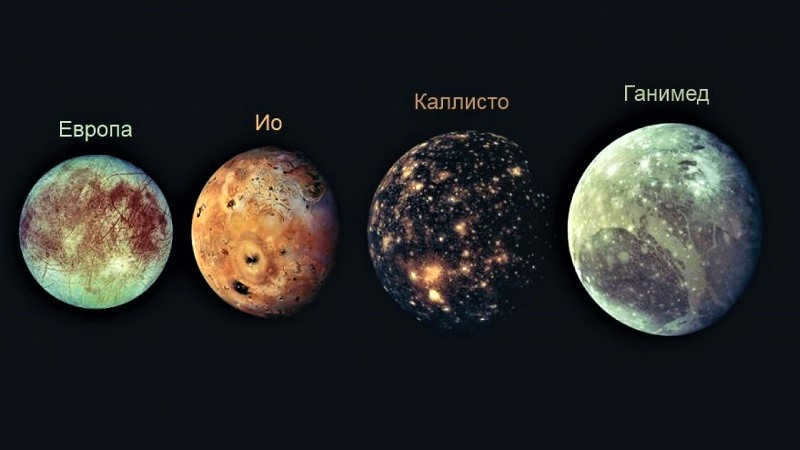
For instance, observe their simultaneous rotation in relation to the planet; and due to Jupiter’s tidal forces, they always face the planet on the same side. Take note that the density values decrease as the satellites get farther away. Below, they are listed in increasing distance (and thus density).
- Io is primarily covered in sulfur and its compounds, a result of its active volcanic activity. Additionally, the volcanoes are still erupting with great force. Consequently, Io appears bright yellow with brown-red patches. The variation in hues is attributed to the varying temperatures of the eruptions.
- Europa is often referred to as a “planet” due to the possibility of life existing there, making it a subject of great interest for scientists. One of the reasons for this interest is the presence of a vast ocean on its surface, which is larger than our own world ocean. Additionally, the cracks and fractures on Europa’s surface were formed in the ice sheet. Perhaps most intriguingly, there is an ample supply of oxygen that could potentially sustain life.
- Ganymede rightfully holds the title of the largest satellite in our solar system. Its surface is adorned with numerous craters.
- Callisto possesses a variable magnetic field and its surface is dotted with countless craters, some of which are surrounded by fissures. It is hypothesized that an ocean may be hiding beneath the satellite’s surface.
It should be noted that the total diameter of the satellite system is 24 million kilometers, with scientists speculating that there were more satellites in the past.
Fascinating Jupiter Trivia
- Jupiter is the only planet whose center of mass is located outside of the solar region, lagging behind by approximately 7%.
- The planet has three delicate and interconnected rings. One is the primary ring, another resembles a spider’s web, and the third forms a halo.
- In addition to this, Jupiter has a collection of asteroids known as the Trojans, which orbit the Sun in a manner similar to the planet itself.
- Furthermore, the planet experiences constant auroras, although their intensity varies.
- The Great X-ray Spot is mainly located at the poles (especially the northern one) and serves as a pulsating source of X-rays. This phenomenon remains one of the enigmatic occurrences on Jupiter, as its formation remains unknown.
- In fact, the apparent magnitude of Jupiter can reach as high as -2.94 (during opposition). As a result, it stands as the fourth brightest object in the sky, following the Sun, Moon, and Venus. Interestingly, it can even be seen with the naked eye from Earth. However, at its farthest distance, its apparent magnitude decreases to -1.61.
- By the way, oppositions occur with a regularity of every 13 months, with a significant opposition taking place once a year. During this time, Jupiter reaches the perihelion of its orbit.
- There is a fascinating theory suggesting that Jupiter could be considered a failed star due to its abundance of satellites.
Study’s Past
Even though humans have been aware of the existence of the planet for centuries, the exploration of it continues till present times.
There are numerous references to it in the mythology of various nations. It is widely believed that the name was bestowed to honor the supreme deity of the heavens and the ancient Roman god of thunder.

By the close of the 20th century, not only were telescopes employed in the study of the planet Jupiter, but also spacecraft. Examples include the Hubble telescope, AMS Pioneer 10 and 11, Voyager, Ulysses, Galileo, Cassini, and other probes.
In the 21st century, alongside observations of the planet itself, the examination of its satellite objects commenced. This has led to the accumulation and processing of numerous images, materials, and information.
Nonetheless, research on Jupiter persists to this day, with projects and missions developed and planned for the exploration of the entire Jupiter system. It is possible that these endeavors will provide answers to many questions about the planet and its satellites. Only time will tell.
Potential Future
As it is commonly known, the luminosity of the Sun increases over time and eventually it will transform into a red giant. Consequently, the habitable zone surrounding it will expand beyond Earth’s current orbit and eventually reach the Jupiter system. The distance between the Sun and Jupiter will decrease, resulting in the satellites of Jupiter warming up. Eventually, the planet will reach a temperature of 1000 K and emit a deep red glow. Simultaneously, the satellites will also become heated, causing their surfaces to become desert-like. Therefore, the existence of life on these satellites would be highly unlikely, as such conditions would render it impossible.
Thus, we have gained an understanding of the largest planet in our solar system and how it distinguishes itself from the others.

Since ancient times, people have observed a bright luminous point in the night sky, along with the Moon and Venus. In Mesopotamia, this bright orange star was named after the supreme deity Marduk. The ancient Romans, on the other hand, named the night luminary after Jupiter, the main deity of their Pantheon. In Scandinavian tribes and among the Germans, the bright star was named in honor of the god Thor. In essence, the fifth and largest planet of our solar system has been a satellite of human civilization since ancient times.
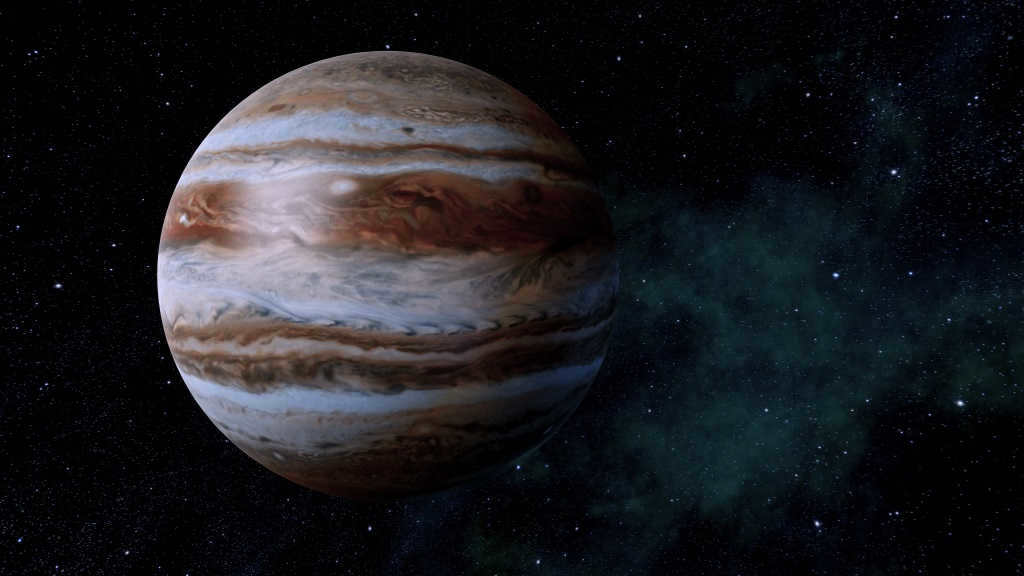

Unique Traits and Characteristics of Jupiter
Throughout history, astronomers have always recognized Jupiter as the second largest celestial object after the Sun. Despite its striking appearance, the planet’s apparent magnitude ranges from -1.61 to -2.94, firmly establishing Jupiter as a planet. With an albedo of 0.52, it boasts one of the highest reflectivity levels among the planets in our solar system, surpassed only by Venus (0.65).
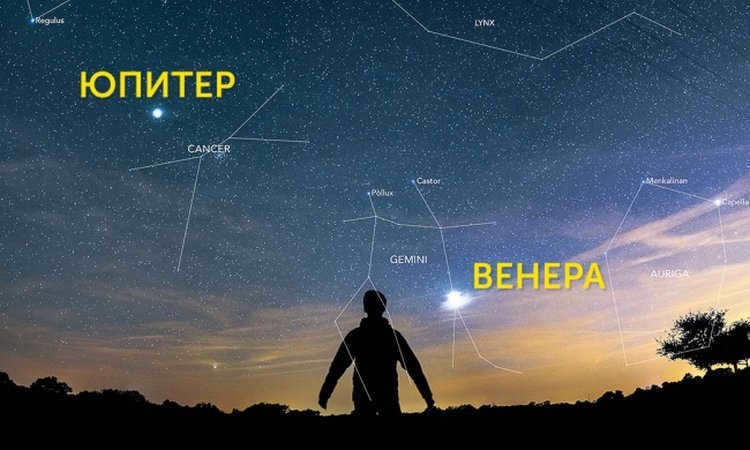
Jupiter was included in the heliocentric system of the solar system proposed by Aristarchus Samosky. The idea put forth by the ancient Greek astronomer and mathematician was that seven planets, including Mercury, Venus, Earth, Mars, Jupiter, and Saturn, revolve around the Sun. This concept was documented by Nicholas Copernicus in the XVI century.
With the introduction of optical instruments, the close examination and exploration of celestial objects in the sky commenced, but Jupiter has always been regarded with a unique reverence. One of the most prominent entities in the nighttime sky initially captured the interest of Galileo Galilei. The Italian scientist was the first to realize that the fifth planet was the largest and possessed an immense size. The four moons, Io, Ganymede, Europa, and Callisto, which were discovered by Galileo, are equally impressive in terms of their dimensions. Following in Galileo’s footsteps, prominent astronomers from around the world, including renowned figures in the field such as Robert Hooke and Giovanni Cassini, contributed to the study of this colossal planet. Thanks to the efforts of these scientists, the scientific community obtained the first astrophysical data regarding the planet’s parameters, a comprehensive description of the planet’s atmosphere was compiled, and several distinct characteristics were identified.
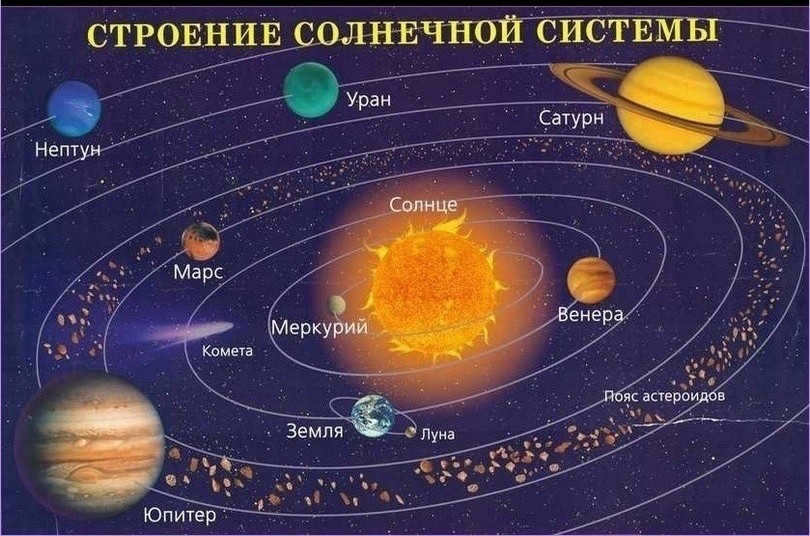
Jupiter occupies a central position in the solar system. Its orbit is situated just beyond the asteroid belt, separating the terrestrial planets from the gas giants. The planet follows an elliptical path around the Sun, with an eccentricity of 0.048775. As a result, the distance from the Sun can vary. At its closest point, known as perihelion, the giant planet comes within 740.55 million kilometers of our star. At its farthest point, known as aphelion, the fifth planet recedes from the Sun to a distance of 816.04 million kilometers. It takes Jupiter 11.8 Earth years to complete one full orbit around the center of our solar system. In other words, a year on Jupiter lasts for 4332 Earth days. This indicates a relatively slow orbital speed of only 13.07 km/s, with which Jupiter travels through outer space.
Mars orbits at a speed of 24.12 km/s, while Earth orbits at a speed of 29.79 km/s.
Jupiter’s equatorial plane nearly aligns with its orbital plane. The gas giant’s axis only tilts at an angle of 3.13°, making it impossible to observe changes in seasons on Jupiter. Additionally, Jupiter holds the record for the fastest rotation among all planets. It spins like a whirlwind, completing a full revolution around its axis in just under 10 hours. More specifically, a day on Jupiter lasts 9 hours and 50 minutes. This rapid rotation continues to amaze astrophysicists to this day.
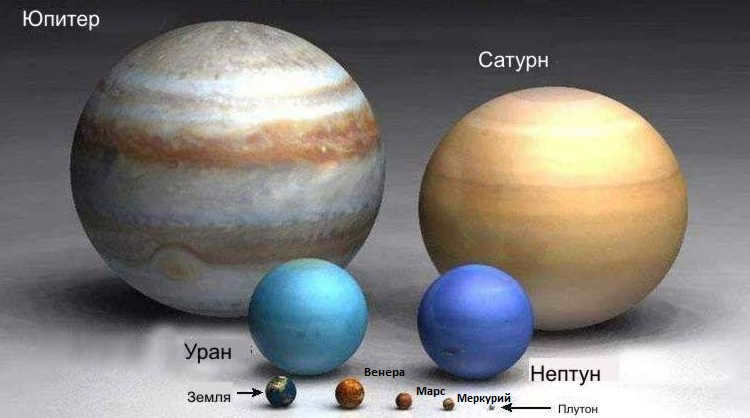
Jupiter’s size measures 139,822 kilometers, making it 11.5 times larger than Earth. It has an egg-like shape, with its polar radius measuring 66,854 kilometers and its equatorial radius measuring 71,492 kilometers.
If Jupiter’s size doesn’t impress you, its mass certainly will. This giant is a true heavyweight, weighing in at 2.5 times the combined mass of everything in our solar system. That includes all the planets, their satellites, and even all the comets and asteroids. Despite its massive size, Jupiter has a surprisingly low density of only 1.326 k/cm3, which is similar to the density of the Sun. In fact, it’s four times less dense than Mercury, the smallest planet in our solar system.
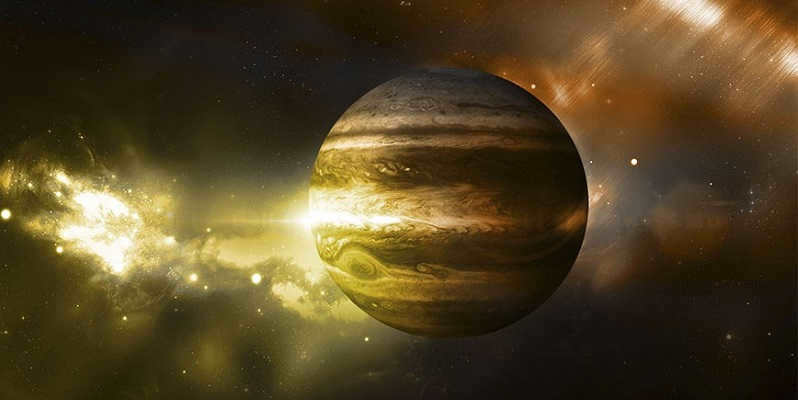
If Jupiter were to increase its mass by another 80-fold, we would be faced with a scorching star instead of a mere planet. Mass and density serve as the primary evidence for those who advocate for the stellar classification of our solar system’s largest celestial body. Experts posit that Jupiter is a failed star that, during its formative stages, fell short of achieving the necessary mass to ignite.
Mysteries and Paradoxes of Jupiter
To confirm the theory that Jupiter originated from a star, one can simply examine the planet’s composition. Jupiter is a massive sphere, with its outer layer composed of 90% gaseous and semi-liquid hydrogen. The remaining 10% of the planet’s atmosphere is made up of helium. In comparison, our own star has a slightly different composition, consisting of 75% hydrogen and 25% helium. A similar concentration of hydrogen and helium can be found in Jupiter’s deeper layers.
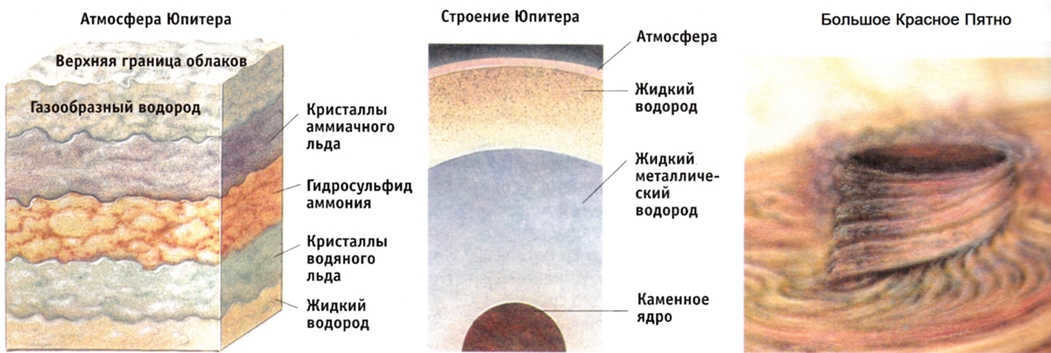
Jupiter is composed of different layers. The upper layers of the planet’s atmosphere are made up of gaseous ammonia crystals. As we go deeper, around 100 kilometers below the surface, the concentration of hydrogen increases and it turns into a liquid. Going even deeper, at around 17,000 km from the imaginary surface of the planet, hydrogen atoms undergo a transformation and become metallized matter.
Contrary to the Sun, the gas giant’s lower atmosphere contains traces of methane, ammonia, hydrogen sulfide, and carbon. Additionally, small quantities of oxygen, volatile neon, silicon, and sulfur are also present. However, unlike other planets, Jupiter lacks a solid surface. Instead, the planet is surrounded by dense layers of atmosphere, with liquid hydrogen enveloping a heavy core. It is highly likely that this core is a compacted combination of metallic hydrogen and helium. There is a possibility of the presence of silicate rocks, but this theory has not been proven.
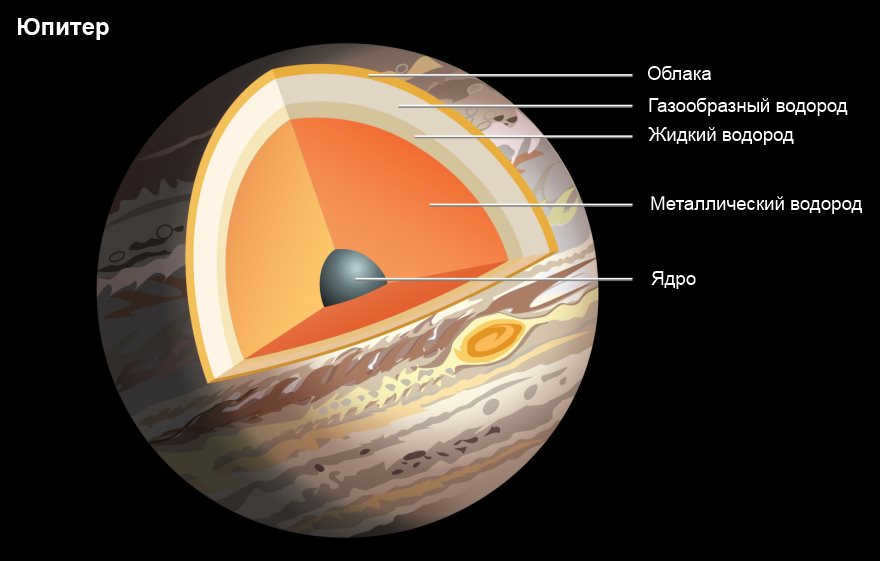
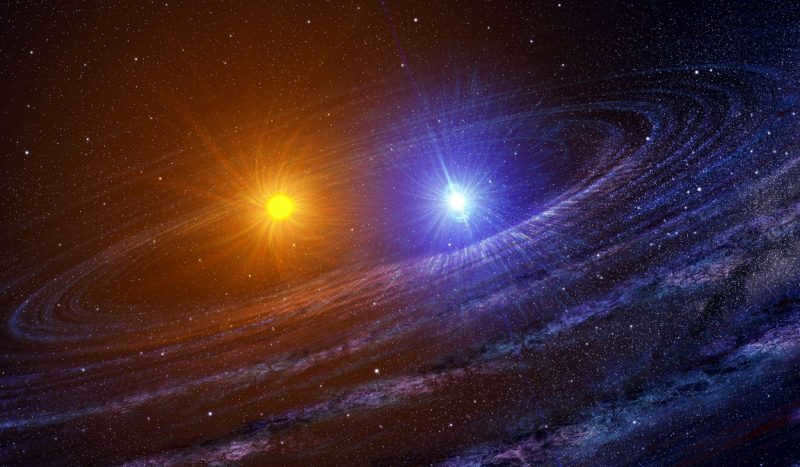
According to the theory, in approximately 4-5 billion years, Jupiter will reach a critical mass, triggering the start of the thermonuclear fusion process within the planet. If this event occurs, the gas giant will ignite like the Sun in an instant. As a result, the solar system, which has long been dominated by a single star, will transform into a binary star system. This hypothesis is supported by the fact that a significant number of star systems in our galaxy consist of a pair of stars. By considering Jupiter as a companion to the Sun, all the pieces of the puzzle fit together. If this scenario were to unfold, it would lead to a drastic transformation in the composition and structure of the entire solar system.
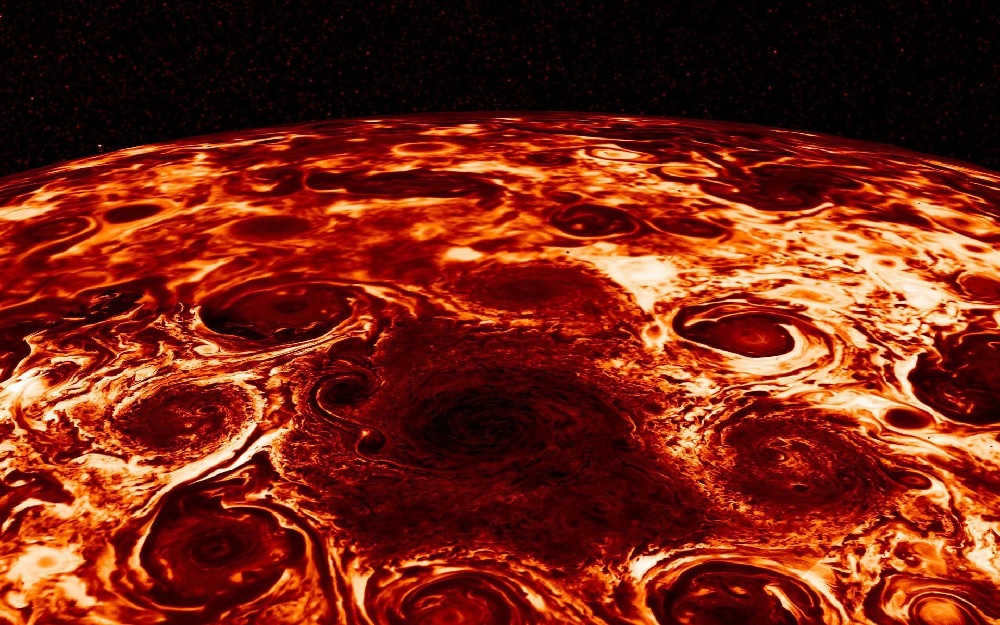
The Satellites of Jupiter
Aside from the idea that the largest planet in the Solar System is actually a star, it’s worth mentioning that Jupiter’s rotation along its orbital path is also unique. According to the laws of physics, a smaller celestial body always orbits around a larger and more massive one. However, in this case, both bodies revolve around a common center of mass, which is situated within the larger body. Jupiter, being massive and heavy, can be comparable in mass to our own sun, so these two colossal objects exert a gravitational pull on each other, causing the center of mass to shift. Based on calculations, Jupiter doesn’t orbit around the center of our sun, but rather around this center of mass, which lies outside the boundaries of the solar disk.
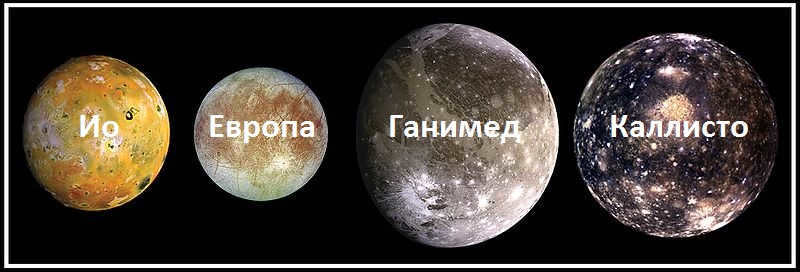
There is a high likelihood that we are currently witnessing the formation of a binary star system. The events of January 2009 provided scientists with evidence that under specific conditions, a gas giant like Jupiter can easily transform into a second sun. The fifth planet in our solar system experienced a sudden burst of activity, resembling a star, due to the influence of coronal emissions. Jupiter even exhibited its own coronal ejections, similar to those observed on a regular star’s surface.
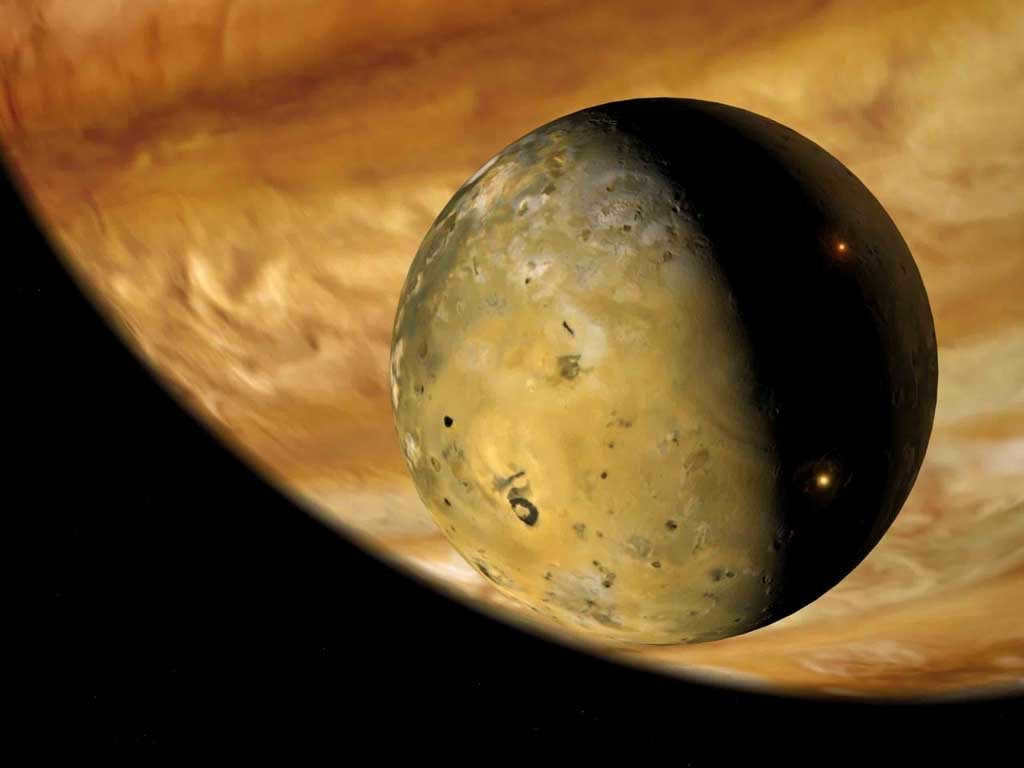
Aside from the Galilean moons within the gas giant’s system, there exists an additional ensemble of celestial bodies known as Amalthea. The remaining satellites of Jupiter are categorized into different families based on their size, composition, and orbital characteristics. Further enhancing this extensive entourage are the rings, which gather the remnants of debris that accumulated during the formation of Jupiter’s system. The remaining satellites of this colossal planet are relatively small in size and have distinct orbital parameters.
Exploration of the Biggest Planet
Since the start of the space era, humanity has become increasingly interested in investigating Jupiter. In 1073, Pioneer 10 embarked on a groundbreaking mission to encounter the colossal gas giant. This pioneering spacecraft captured the initial up-close snapshots of the planet, expanding our understanding of its dimensions, mass, and polar flattening.
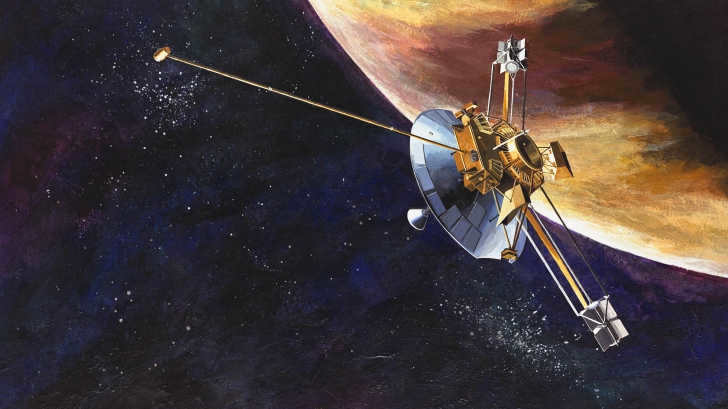

Pioneer was followed by two probes, Voyager 1 and Voyager 2, which examined the massive planet’s rings and moons, the Great Red Spot, and the auroras of Jupiter’s poles.
In 1995, the Galileo space probe began studying the fifth planet of our solar system. In 2000, it was succeeded by the Cassini automated interplanetary station, which dispatched the Huygens probe to the moon Io.
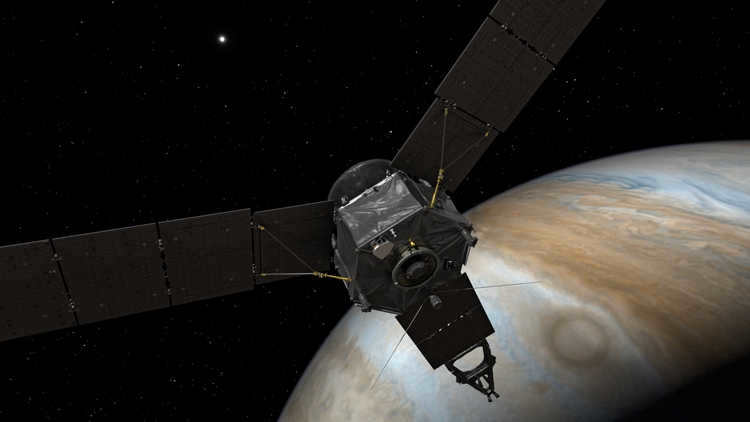
The Juno spacecraft has been conducting studies of Jupiter since 2016, and along with the Hubble Space Telescope, it has been providing the scientific community with extensive knowledge about the largest planet in our solar system. The information gathered has been particularly fascinating, focusing on the composition of Jupiter’s atmosphere and the fascinating processes involved in planetary formation.
How many planets exist in our solar system?
How many planets are there in the solar system? Up until the late 1990s, there were a total of 9. However, astronomers made the decision to revise the list and exclude the smallest planet in the solar system – Pluto. This decision was made based on the fact that Pluto does not meet the criteria set by the International Astronomical Union.
The location of each planet within our solar system directly affects the length of its year. The further a planet is from the sun, the longer its year will be. In terms of distance from the sun, Jupiter is considered the fifth planet in the order.
There exist satellites of planets in the solar system that are larger in size than Mercury. It is possible that in the near future, we will come across news about new planets within our solar system, as astronomers are constantly working towards uncovering new celestial bodies. Apart from the planets within our own solar system, there are also planets in other solar systems, known as exoplanets. The first exoplanet was discovered back in 1992, and since then, over 1,000 exoplanets have been identified within the Milky Way galaxy.
Could Jupiter support life?
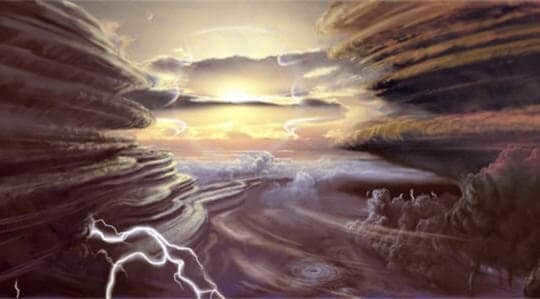

This colossal planet is surrounded by dense, vibrant clouds composed of poisonous gases. Its atmosphere primarily consists of 86% hydrogen and 14% helium, with additional traces of methane, water vapor, and ammonia.
As one ventures closer to the core of Jupiter, the thin and frigid atmosphere gradually transforms into a dense, obsidian haze. Enveloping the core is a vast ocean of liquid hydrogen, plunging down to depths of approximately 1,000 kilometers.
At the heart of Jupiter, the tremendous pressure causes the hydrogen to transition from gas to liquid, eventually transforming into a metallic state. This gives rise to a rocky core that surpasses the size of our own planet, yet weighs a staggering twenty times greater.
The temperature in the clouds above Jupiter’s surface averages around -112⁰C, while below the clouds it drops to about -13⁰C. As one gets closer to the core, the temperature steadily rises. This stormy planet is constantly plagued by never-ending hurricanes and storms. The ever-changing shape of the colorful clouds, both colored and white, is a result of the constant storm winds. These winds can reach speeds exceeding 500 kilometers per hour. A massive red spot resembling an eye has been caused by a colossal storm that has been raging for over 300 years.
The storms on Jupiter are not influenced by the sun; instead, they are generated by the planet’s own radiation. Occasionally, thunderbolts can be observed piercing through the planet’s outer atmosphere. These electrical discharges are a thousand times more powerful than a typical lightning strike on Earth.
Jupiter’s Rings and Moons
Jupiter possesses a trio of rings that encircle the planet horizontally. Researchers speculate that these rings originated from cosmic dust particles. Although the rings are nearly imperceptible, they become visible when Jupiter passes directly between the Earth and the Sun.
Based on a compilation by astronomers, Jupiter boasts a grand total of 63 moons, surpassing the number of moons found around any other planet in the solar system. Among these satellites, the four Galilean moons hold the distinction of being the largest and most massive. These moons were initially detected by the esteemed Italian astronomer Galileo in the year 1610.
When equipped with a powerful pair of binoculars, it is possible to spot these moons in the night sky:
- Ganymede, the largest of Jupiter’s moons, features a tenuous atmosphere primarily composed of oxygen;
- Io, an intensely volcanic moon, displays a remarkably captivating color palette consisting of black, red, and yellow;
- Europa, located on the opposite side of the Earth, is enveloped in ice and possesses a vast reserve of oceanic salt. It is within the realm of possibility that life may thrive within Europa’s marine environments. This celestial body happens to be the tiniest among the Galilean satellites.
- Callisto boasts an abundance of craters, distinguishing it as the darkest satellite of the planet.
Furthermore, there exist additional clusters of satellites, each relatively smaller in size.
Interesting facts about Jupiter
Many of the celestial bodies in our solar system are named after deities. The name Jupiter is derived from the Roman god of sky and light.
- Jupiter is one of the five planets that can be seen with the naked eye from Earth, and it is the third brightest object in the sky, after Venus and the Moon;
- Jupiter possesses an incredibly strong magnetic field, which is 14 times stronger than Earth’s;
- Due to its lack of a solid surface, spacecraft cannot land on Jupiter;
- Despite its massive size, Jupiter rotates on its axis at a rapid pace, completing a day in just 9 hours and 55 minutes;
- If you were to weigh 32 kg on Earth, your weight on Jupiter would be 84 kg;
- The planet’s rapid rotation causes it to slightly flatten, giving it a flattened spheroid shape.

